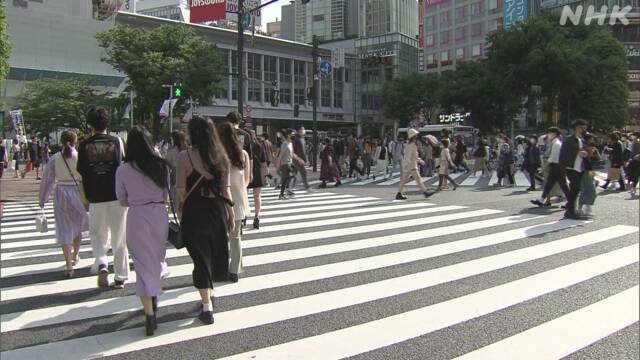The number of people on the 9th in Tokyo, Osaka, Hyogo, and Kyoto, where the third state of emergency was extended, was lower than the average on Saturdays, Sundays, and holidays during the period when the second declaration was issued, but it is new. In Aichi and Fukuoka, which join the target area, the number increased on the contrary.
NHK has issued a third emergency declaration in Tokyo and Osaka using mobile phone location information data collected by IT-related company "Agoop" with the permission of the user in a form that does not identify individuals. , Hyogo, Kyoto, and the number of people in the main points of Aichi and Fukuoka who will newly join the target area from the 12th was analyzed.
The time analyzed is from 6 am to 6 pm during the day and from 6 pm to midnight the next day at night.
According to this, the number of people on the 9th of the four prefectures where the declaration was issued decreased at all points compared to the average of Saturdays, Sundays, and holidays during the period when the second declaration was issued.
The rate of decrease is
▼ 25% during the day and 19% at night near Tokyo Station,
▼ 33% during the day and 9% at night near the Shibuya Scramble intersection,
▼ 54% during the day near Osaka Umeda Station, at night 53%,
▼ 34% during the day and 34% at night near Sannomiya Station in Kobe City
,
▼
33% during the day and 36% at night near Kyoto Station.
However, in Aichi and Fukuoka, which are newly added to the target area,
▼ near Nagoya Station did not change from 0% during the day, but increased by 14% at night,
▼
increased by
1% during the day near Hakata Station, and 17 at night. The increase in% and the increase at night were conspicuous.
Significant increase in average ratio of Saturdays, Sundays, and holidays at the time of the first declaration
On the other hand, compared to the average of Saturdays, Sundays, and holidays during the period when the first declaration was issued last year, all points increased significantly.
The rate of increase is
▼ 122% (about 2.2 times) during the day and 131% (about 2.3 times) at night near Tokyo Station
,
▼
93% (about 1.9 times) during the day and 193 at night near the Shibuya scramble intersection. % (Approximately 2.9 times),
▼ 200% (approximately 3 times) during the day near Osaka Umeda Station, 204% (approximately 3 times) at night,
▼ 168% (approximately 2.7
times)
during the day near Sannomiya Station in Kobe City Double), 182% at night (about 2.8 times),
▼ 179% (about 2.8 times) during the day near Kyoto Station, 166% (about 2.7 times) at night,
▼ 286% during the day near Nagoya Station
(about 2.7 times)
Approximately 3.9 times), 334% (approximately 4.3 times) at night
, 487% (approximately 5.9 times) during the day and 566% (approximately 6.7 times) at night near Hakata Station.

